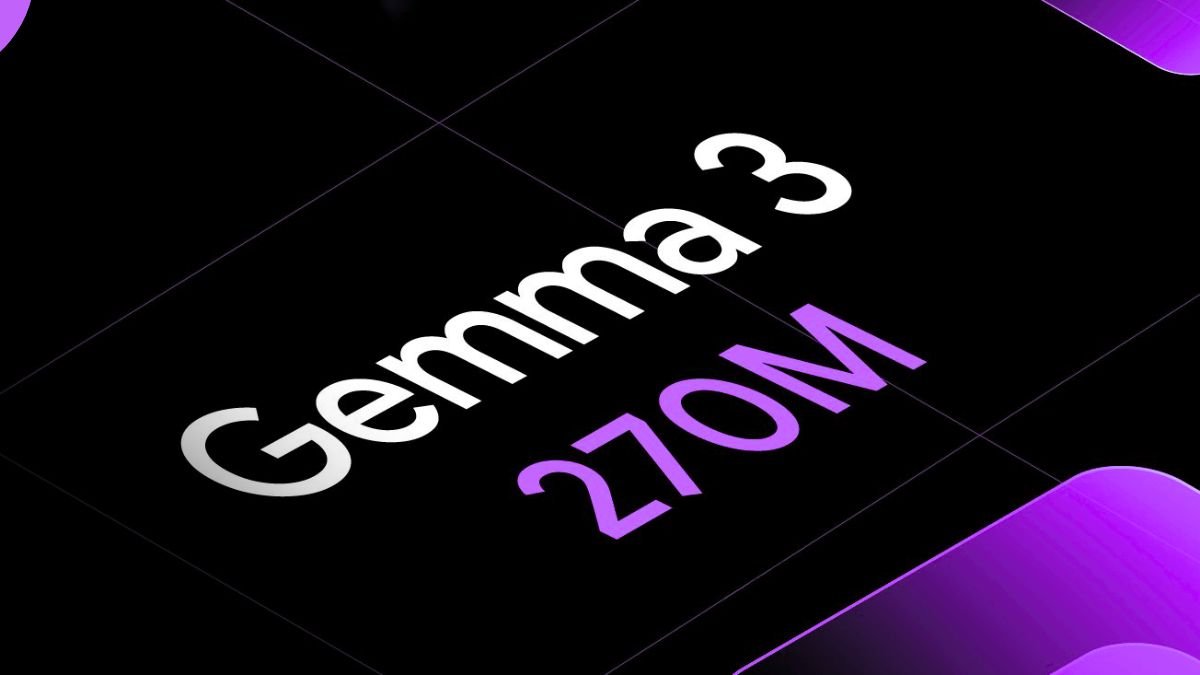
Today’s announcement introduces a compact model built for real-world tasks. The 270-million-parameter design balances a modest footprint with strong instruction following and task fine-tuning. Developers gain access to both pre-trained and instruction-tuned checkpoints to start fast.
The architecture splits roughly 170 million embedding parameters and about 100 million transformer parameters. A large 256k-token vocabulary helps handle rare tokens and broad language coverage at this size. The tier supports a 32K context window for lengthy inputs without big memory trade-offs.
Production-ready options arrive with QAT INT4 checkpoints. These enable low-precision inference with minimal loss, and internal Pixel 9 Pro SoC tests show very low battery use across multi-turn conversations. Early benchmarks highlight IFEval strength and solid task results for practical applications.
The release rides strong ecosystem momentum, with over 200 million downloads across the family. Readers can expect details on architecture, efficiency numbers, ideal use cases, and hands-on download, fine-tune, and deployment paths in the sections ahead.
Breaking: Google’s compact Gemma 3 270M lands as an open, multilingual model for developers
A compact 270M member joins the family as a practical option for fast iteration and focused tasks. gemma 270 is positioned as the smallest production-grade entry, built to be specialized and cost-efficient for real workloads.
The release ships both a pre-trained base and an instruction-tuned variant so developers can test zero-shot outputs or quickly fine-tune for niche jobs. It keeps the family’s modern architecture and a 32K context window while trimming compute needs.
Right tool for the job: using a small, capable model cuts inference costs, lowers latency, and runs well on modest hardware. Internal tests show strong energy efficiency — about 0.75% battery for 25 conversations on a Pixel 9 Pro SoC — which supports on-device privacy workflows.
Instruction-following strength and measured performance make this release viable for structured tasks where repeatability matters rather than open-ended dialogue. Immediate benefits for developers include easy downloads, broad tool compatibility, and a clear path from evaluation to fine-tuning and deployment.
Under the hood: parameters, architecture, and energy efficiency
This compact tier blends a large token set with a tight transformer stack to balance coverage and efficiency. It targets practical use cases that need low latency and small memory footprints on commodity hardware.
Size and vocabulary
The configuration allocates roughly 170M embedding parameters to support a 256k-token vocabulary, plus about 100M transformer parameters in the compute stack. This split keeps the overall parameter count manageable while preserving representational capacity.
The large vocabulary improves rare-token coverage and helps with multilingual or domain-specific text during fine-tuning. The size supports a 32K context window, enabling concise, structured tasks without huge context overhead.
Extreme efficiency on devices
Quantization-aware workflows enable low-precision execution that favors edge deployments. Internal efficiency tests on a Pixel 9 Pro SoC report only about 0.75% battery drain for 25 conversations when running INT4 checkpoints, showing strong on-device suitability.
0.75% battery for 25 conversations on a Pixel 9 Pro SoC (INT4).
Production-ready quantization
QAT INT4 checkpoints provide aggressive quantization with far less quality loss than naive post-training approaches. That yields lower latency and a smaller memory footprint for cost-effective edge deployment.
Tooling compatibility with stacks like llama.cpp, Gemma.cpp, LiteRT, Keras, and MLX offers straightforward paths to run this configuration on desktop, mobile, and edge hardware. Together, the architecture and quantization enable real-world deployments that preserve instruction-following behavior at low cost.
Performance snapshot: Google releases open‑source Gemma 3 270M multilingual model
Designed for targeted workflows, this tier emphasizes instruction compliance and deployment efficiency. Benchmarks show clear strengths when the task is well-defined and inputs stay structured. IFEval scores highlight instruction-following quality: the instruction-tuned checkpoint posts about 51.2 IFEval 0-shot, a strong signal for its scale.
Instruction following strength
The instruction-tuned variant improves compliance with prompts over the pre-trained base. PT scores reflect baseline commonsense ability, while IT boosts adherence to explicit directions. That split makes the tier useful for classification, extraction, and disciplined generation tasks where predictable outputs matter.
What the numbers say
The configuration supports a 32K context window, which fits most structured use cases without bloating memory use. Benchmarks such as HellaSwag, PIQA, ARC-c, and WinoGrande show typical compact trade-offs: decent accuracy on many tasks, but limited complex reasoning versus larger counterparts.
“IFEval 0-shot 51.2 for the instruction-tuned 270M checkpoint.”
Inference options via Vertex AI and efficient local runtimes help turn these results into real-world performance. With quantized runtimes, throughput and responsiveness remain strong on modest hardware. Carefully tuned training on your data can close gaps for narrow domains, but validate with in-domain tests since distribution shifts can change results substantially.
What it’s great at: task‑specific applications and creative tools
This tier excels at narrowly scoped workloads where speed and predictability matter most. It targets high-volume, well-defined applications such as sentiment analysis, entity extraction, routing, and compliance checks. These tasks benefit from its instruction-tuned behavior and low compute needs.
High-volume, well-defined tasks
Use cases include text classification, extraction, routing, and audit workflows. Teams convert unstructured content into structured outputs with high throughput. That makes this option ideal for automated pipelines and customer support routing.
Privacy-first on-device workflows
Efficient on-device inference keeps sensitive user data local and reduces network exposure. This enables apps that protect privacy while cutting latency and operating costs. Deploying many small instances can cover more functions with less risk.
Bedtime Story Generator
The community-built bedtime story generator is a concrete example. A lightweight web app powered by Transformers.js runs offline in the browser. It shows how creative, playful applications can work without cloud calls and with minimal compute.
Enterprise lens
At larger scale, Adaptive ML fine-tuned a 4B variant for SK Telecom’s multilingual moderation task and beat larger proprietary systems on that niche. The same specialization strategy scales down: a compact, instruction-tuned model can deliver leaner costs and strong task fit when the scope is narrow.
“Specialized models often outperform larger general ones on focused tasks when data and pipelines are well designed.”
How to use it today: downloads, tools, fine‑tuning, and deployment
Start by fetching the checkpoint that fits your use case, then pick a runtime for quick tests and iteration. Both pre-trained and instruction-tuned checkpoints are available from multiple distribution points to match different developer workflows.
Get the files
Pull checkpoints from Hugging Face, Ollama, Kaggle, LM Studio, or Docker depending on your preferred packaging and CI path. These sources host both base and instruction-tuned variants so teams can pick a starting point for eval or fine-tuning.
Run inference
For managed testing, spin up a Vertex AI endpoint for a fast, scalable benchmark. For local runs, use efficient tools like llama.cpp, Gemma.cpp, LiteRT, Keras, or MLX to measure latency and memory on target hardware.
Fine‑tune and ship
Prepare labeled data and begin with the instruction-tuned checkpoint when appropriate. Use Unsloth or Hugging Face trainers, or JAX workflows, then deploy to cloud services such as Cloud Run or directly to edge devices.
“QAT INT4 checkpoints offer lower memory use and faster inference on constrained hardware with minimal quality loss.”
Calibrate context length, batch size, and quantization settings for your task. Package the model with lightweight filters and monitoring harnesses, and record the model card version and baseline benchmarks for reproducibility and compliance.
Conclusion
This compact release gives teams a practical, low-cost way to run instruction-driven tasks on devices and in the cloud.
The gemma 270 checkpoint packs 270m parameters, a 256k vocabulary, and QAT INT4 options that make on-device and cloud use efficient. Internal Pixel Pro tests show about 0.75% battery for 25 conversations, which supports privacy-first workflows on devices.
Developers can grab weights from Hugging Face and other hubs, run quick tests with llama.cpp or LiteRT, then fine-tune and deploy a lean service. The bedtime story generator web app shows how a small story generator or other specialized models can deliver value fast.
Validate model ability on your text, measure results, and monitor in production. Start with the right tool, fine-tune to your task, and scale within enterprise or edge applications.



